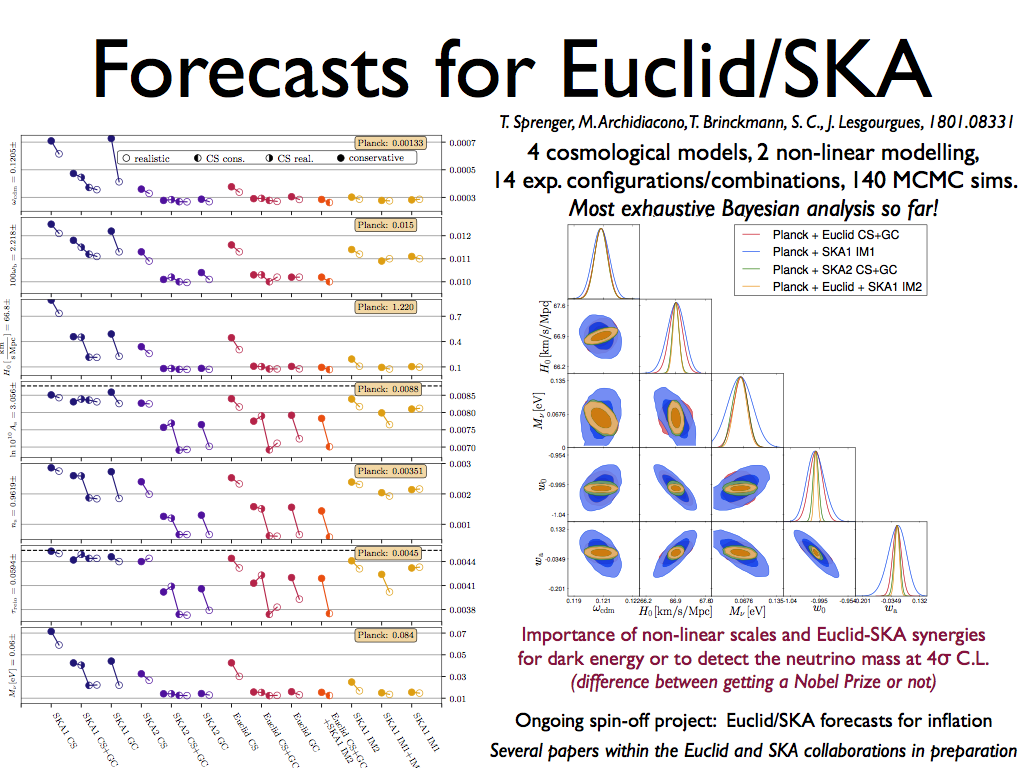We have recently released a preprint [1] in which we have computed cosmological forecasts for the Euclid space telescope and the SKA radiotelescope.

In particular, we have devised a new method to model the theoretical error that goes beyond the usual cut-off on small scales. The advantage of this more efficient implementation of the non-linear uncertainties has been tested through a Markov–Chain–Monte–Carlo (MCMC) forecast of the sensitivity of Euclid and SKA to the standard ΛCDM model and three extended scenarios.
We have compared the sensitivity of 14 different combinations of cosmological probes and experimental configurations. Interestingly, we found a significant improvement of the constraints on the extended model parameters when combining Euclid with a low redshift HI intensity mapping survey by SKA1, demonstrating the importance of the synergy of Euclid and SKA.
This is so far the most exhaustive forecasting work based on Bayesian methods, both for Euclid and the SKA: it has required to run more than 150 MCMC simulations, for a total of several hundred thousands of CPU hours.